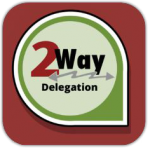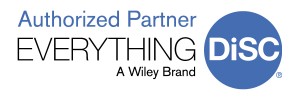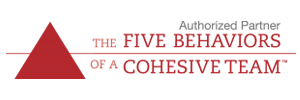Course Description
Every function and activity that takes place in an organization involves some form of direct or indirect communication. The success of these functions and activities directly depends on the ability of the people in the organization to communicate effectively. This course focuses on the process of creating open communication that increases rapport and productivity. Most people in organizations take steps to work toward “being a better communicator.” In this course, participants will identify concrete steps and processes that will truly help them improve their communications skills. Once these concepts are identified, they will then practice these skills during several role-play and group activities, which will add more depth and solidify their learning.
The course begins with an activity where participants work in groups to identify both effective and ineffective communication elements. They will also consider and discuss the impacts of both. It is during this activity that participants gain a better understanding of the need to communicate effectively during every interaction. They then are introduced to a five-step process for creating open and effective communication. This process is the foundation for the course, as participants will be working through each of the five steps for the rest of the session. Participants begin by working in small groups to identify barriers in the workplace that prevent the communication process from flowing smoothly. At the end of the session, participants will revisit these barriers with solutions gained through the course content and learning. Next, they will each take a communication assessment that will help pinpoint both areas of strength and improvement in their personal communication skills.
After taking a personal look at skills, participants will then examine their communication as a group by working through a difficult challenge as a large group. Effective communication is required for success in this challenge. Participants gain experiential insight as to where the gaps in skills hurt their opportunity for success and where their strengths in communication as a group helped to move them forward.
In the second half of the course, participants explore concepts to improve their communication skills, and then immediately apply those concepts through small-group activities and role plays. Through these activities, participants learn to identify the goal of a message, create assertive statements, ask for and receive feedback, and utilize strong questioning and listening skills. They will then apply their newly acquired skills and concepts to an actual message they need to deliver.
Supplemental information in regard to writing effective e-mail messages and delivering messages upwards to leadership is included.
Objectives
After completing this course, you will be able to:
- Describe the five steps to creating open communication.
- Assess communication skills and identify areas of strength and development.
- Determine the most appropriate method for sharing messages.
- Demonstrate the appropriate nonverbal skills to enhance communication with others.
- Create assertive statements.
- Apply open-ended questioning techniques to increase two-way communication.
- Use active listening skills to improve rapport and productivity in the working environment.
- Respond effectively when receiving feedback.
Duration
This course has an 8-hour agenda.
Class Size
This course is designed for 8 to 25 participants.
Course Outline
Below is the course outline with timing for an 8-hour agenda.
| Section | Timing | Elapsed Timing |
| Welcome and Introduction | 15 minutes | |
| Agenda and Objectives | 5 minutes | (20 minutes) |
| Communication: Offend or Respect | 20 minutes | (40 minutes) |
| Communication Process | 15 minutes | (55 minutes) |
| Break | 10 minutes | (1 hr and 5 minutes) |
| Communication Barriers | 30 minutes | (1 hr, 35 minutes) |
| Communication Assessment | 30 minutes | (2 hrs and 5 minutes) |
| Objective: Describe the five steps to creating open communication | ||
| Zoom | 45 minutes | (2 hrs and 50 minutes) |
| Creating Open Communication | 10 minutes | (3 hrs) |
| Step One: Identify the Goal of the Message | 20 minutes | (3 hrs and 20 minutes) |
| Putting it All Together, Question One | 15 minutes | (3 hrs and 35 minutes) |
| Lunch | 60 minutes | (4 hrs, 35 minutes) |
| Objective: Create assertive statements. Demonstrate the appropriate nonverbal skills to enhance communication with others. | ||
| Step Two: Share Your Message | 5 minutes | (4 hrs and 40 minutes) |
| The Method | 10 minutes | (4 hrs and 50 minutes) |
| The Impact | 10 minutes | (5 hrs) |
| Video: Straight Talk | 40 minutes | (5 hrs and 40 minutes) |
| Delivering Your Message Assertively | 10 minutes | (5 hrs and 50 minutes) |
| Creating Assertive Statements | 15 minutes | (6 hours and 5 minutes) |
| Putting it All Together, Question Two | 10 minutes | (6 hrs and 15 minutes) |
| Objectives: Apply open-ended questioning techniques to increase two-way communication. Use active listening skills to improve rapport and productivity in the working environment | ||
| Step Three: Ask for Feedback | 20 minutes | (6 hrs and 35 minutes) |
| What if? | 20 minutes | (6 hrs and 55 minutes) |
| Step Four: Listen to the Feedback | 20 minutes | (7 hrs and 15 minutes) |
| Objective: Respond effectively when receiving feedback | ||
| Step Five: Respond to the Feedback | 15 minutes | (7 hrs and 30 minutes) |
| Putting it All Together, Questions Three, Four, and Five | 10 minutes | (7 hrs and 40 minutes) |
| Breaking the Barriers | 15 minutes | (7 hrs and 55 minutes) |
| Summarize and Action Planning | 5 minutes | (8 hrs) |


